
Edward Munch—the creator of nightmares and the singer of anxiety
Edward Munch (born on December 12, 1863 - died on January 23, 1944) is a world-renowned Norwegian artist, expressionist, and symbolist, known for his "pictorial horror" and the creator of the famous painting "The Scream." Edward Munch's work is infused with motifs of anxiety, horror, death, jealousy, and despair, while also often conveying a hymn to life, hope, and attempts to escape psychological abysses. Munch has left his mark in the history of art as a vivid painter and emotional graphic artist, considered the father of expressionism and one of the precursors of surrealism.
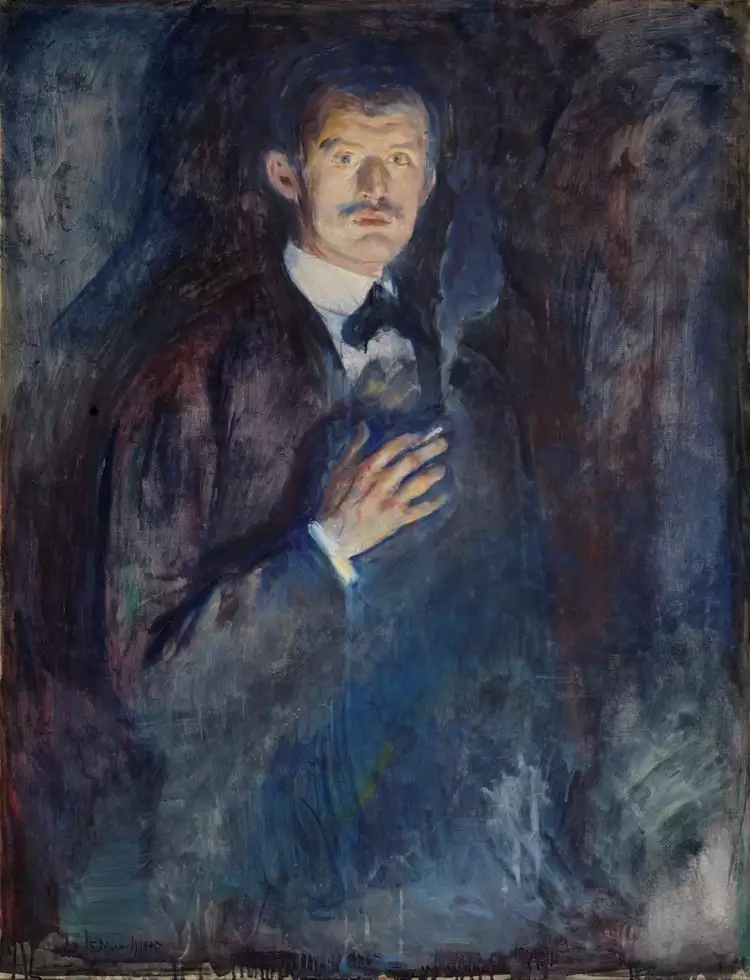 Edward Munch. Self-Portrait with Cigarette, 1895
Edward Munch. Self-Portrait with Cigarette, 1895
Edward Munch created over a thousand paintings, frequently revisiting many themes in various variations (for example, "The Scream" exists in four versions). Most of his themes are tragic and emotionally charged, earning him the title of "Norwegian genius of gloom." However, everything was not so straightforward.
Edward Munch was a complex and multifaceted individual. Despite experiencing tragedies, psychological crises, and a suicide attempt, he was not a person entirely immersed in the depths of depression. This man loved life, and his creativity was, to some extent, a personal psychotherapy helping him cope with emotional turmoil. Moreover, it was a philosophical exploration of human essence, delving into the depths of the human psyche and seeking paths to escape from the abyss. Hence, there are works (mostly landscapes) where the expressionist celebrates life. Such works include "Under the Apple Tree," "Sun," and "Dance of Life." Nevertheless, even in these pieces, hints of anxiety are interwoven into the emotional melody.
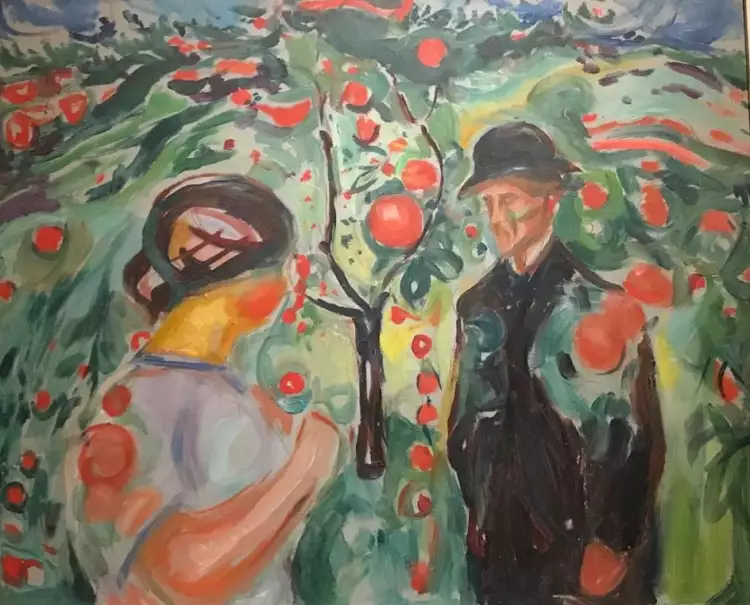 Edward Munch. Under the Apple Tree, 1913-1915
Edward Munch. Under the Apple Tree, 1913-1915
Edward Munch's Biography
Edward Munch was born on December 12, 1863, in the small town of Løten, Norway. His father was a military doctor, a man of modest means but from a family known in Norwegian cultural circles. His grandfather was a preacher, an uncle was a historian, and one of his relatives was a painter named Jacob Munch, who studied under the famous French neoclassicist Jacques-Louis David.
The family was poor and often moved from one cheap accommodation to another, sometimes even to cheaper ones. The apartments they had to rent were damp, lacked light, and fresh air. Because of this, Edward's mother and older sister fell ill with tuberculosis.
At the age of five, the boy lost his mother. His older sister, Sophie, took care of him. Edward was deeply attached to her and experienced a severe emotional breakdown when tuberculosis claimed his sister's life. He was fifteen years old at that time.
The religious sermons of his father also had a significant impact on the teenager's psyche, causing him to suffer from nightmares with visions of hell.
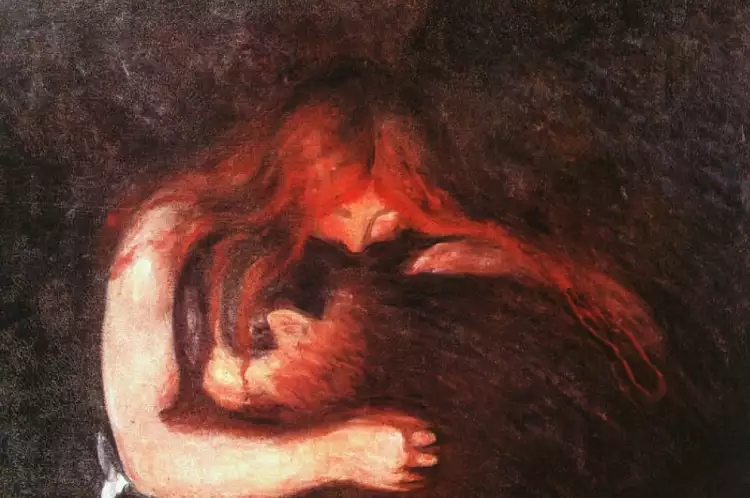 Edward Munch. Love and Pain (Vampire), 1893-1895
Edward Munch. Love and Pain (Vampire), 1893-1895
The experiences of his childhood and youth had a profound psychological impact on Munch and later reflected in the artist's work.
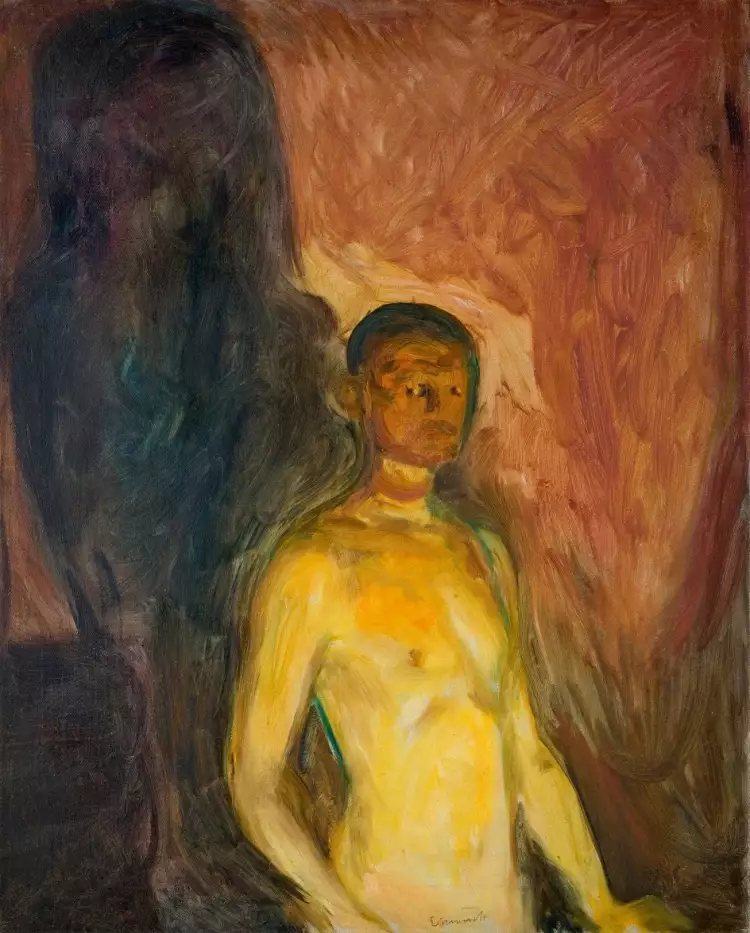 Edward Munch. Self-Portrait in Hell, 1903
Edward Munch. Self-Portrait in Hell, 1903
Edward Munch's own health was fragile, which hindered his studies. Nevertheless, at the age of sixteen, he enrolled in a technical college. He showed impressive success in exact and natural sciences but dropped out after a year to pursue his dream of becoming a painter. This decision angered his father, but other relatives supported the young man, recognizing his evident artistic talent. Moreover, the family already had an example of a successful career in this field.
In 1881, the young man began studying at the Royal School of Art in Oslo. Two years later, he presented his first works to the public, which were painted in a traditional realistic manner.
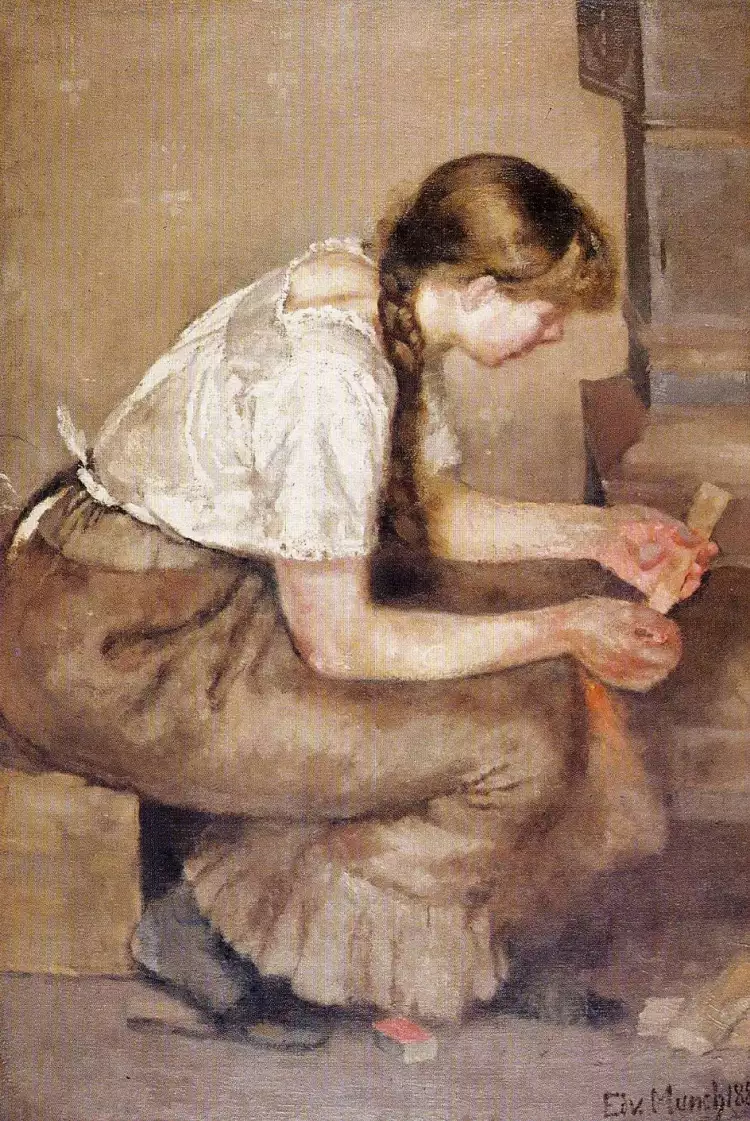 Edward Munch. A girl starting a fire, 1883
Edward Munch. A girl starting a fire, 1883
With the scholarship he received, the aspiring painter traveled to Paris, where he became acquainted with the latest trends in art. He began to experiment, and his style became bolder. As a result, "The Sick Child" (1886), painted in memory of his deceased sister, became innovative and received a barrage of criticism. In this work, one can already notice the strong emotional intensity that would become key in Edward Munch's artistic career. The painting is filled with a sense of pain, hopelessness, and the desire to live. Only later did audiences appreciate this tragic portrayal of a dying youth.
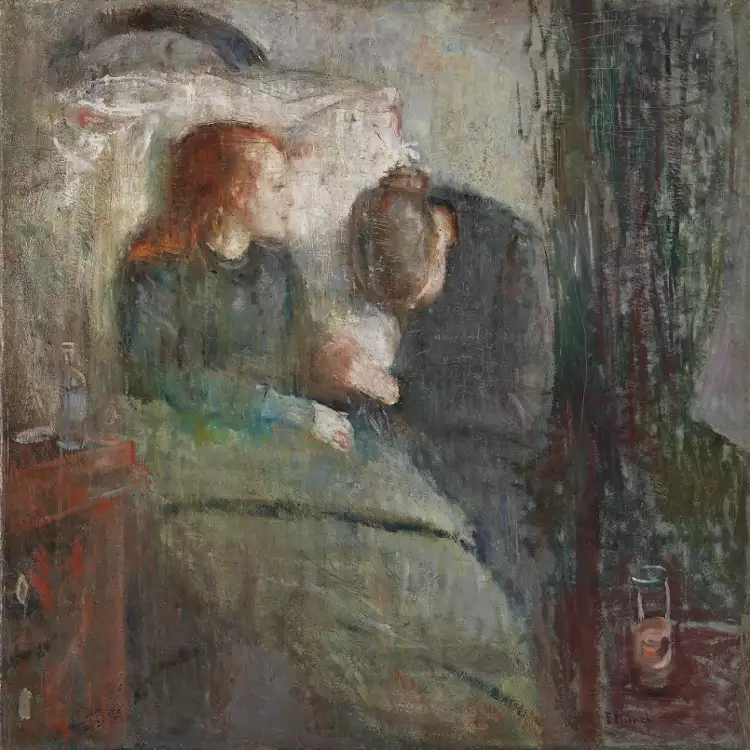 Edward Munch. The Sick Child, 1886
Edward Munch. The Sick Child, 1886
In 1898, the artist once again traveled to France. The greatest influence on him came from the impressionists and pointillists.
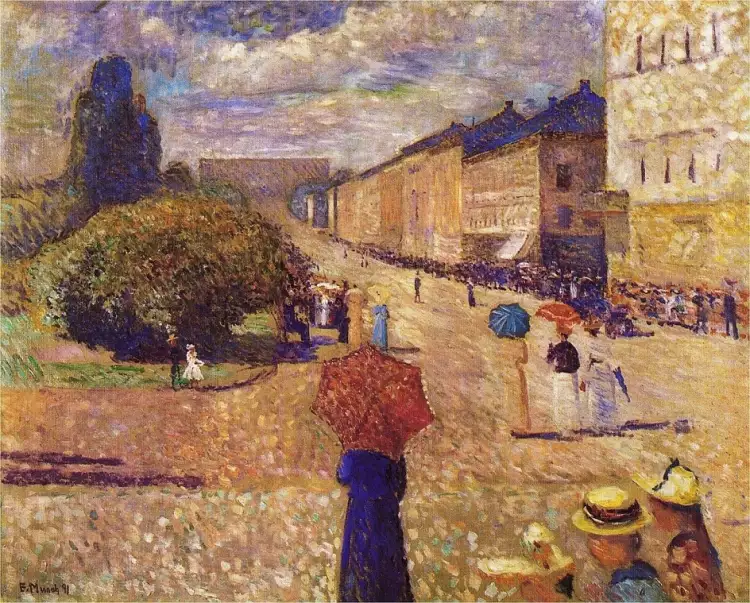 Edward Munch. Spring at Karl Johans gate, 1890
Edward Munch. Spring at Karl Johans gate, 1890
In the 1890s, the style of the expressionist artist was finally formed. After influential conservative painter Eilert Adelsteen Normann highly praised his works in 1892, which was quite unexpected, the critics became more favorable to the young artist. Gradually, he gained recognition.
In 1892-1893, the master began working on his famous cycle "The Frieze," creating works on eternal themes, reflecting on love and death. It is within this series that the author's main masterpiece, "The Scream" (1893), was painted.
The beginning of the 20th century was marked by a severe emotional breakdown for Edward Munch due to a tragic romance with Matilda Larsen, whom their circle of friends called "Tulla." The artist even attempted to shoot himself, but fortunately, he failed. In 1908, he spent six months in a psychiatric hospital. Perhaps heredity played a role, as the master's second sister suffered from schizophrenia.
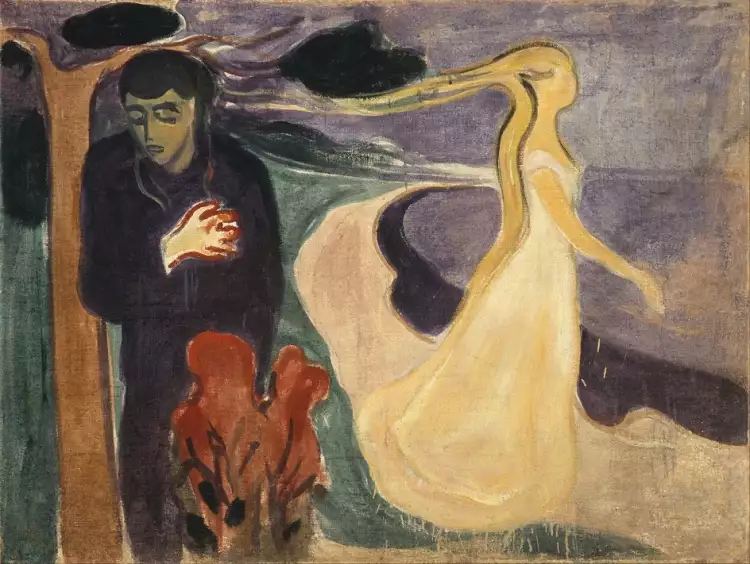 Edward Munch. Separation, 1903
Edward Munch. Separation, 1903
Nevertheless, Munch's later works are less dramatic. It is possible that during this time, the artist, who had twice been on the brink of life and death (first due to a suicide attempt, then because of the Spanish flu), began to love life more intensely. However, echoes of anxious moods are still present in his later works.
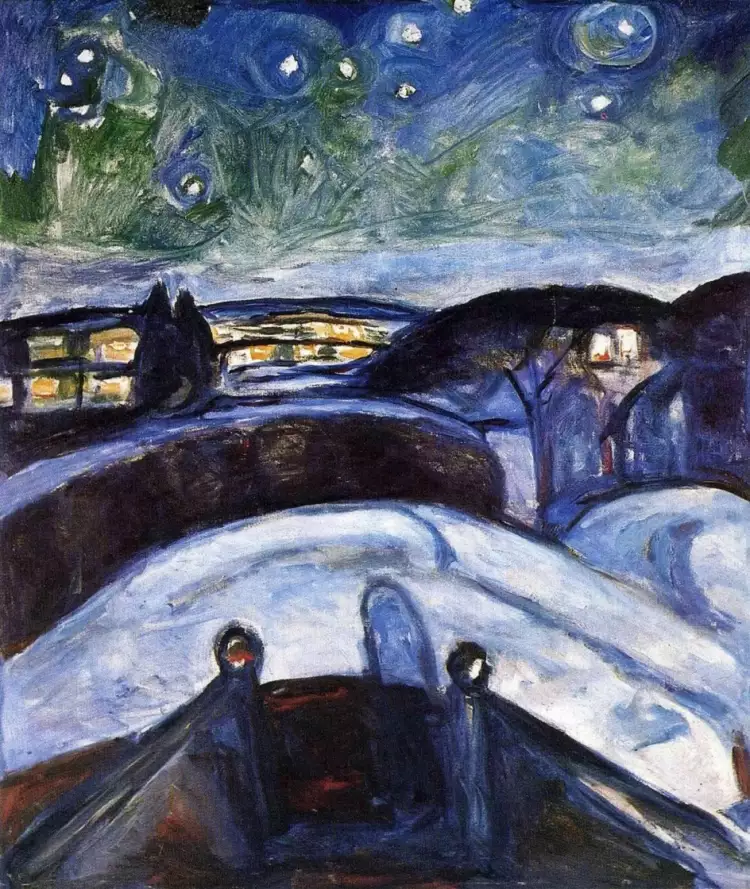 Edward Munch. Starry Night, 1922
Edward Munch. Starry Night, 1922
Edward Munch left the world on January 23, 1944, at the age of 80. His last years were tumultuous: the fascist regime that established itself during World War II in Norway initially called the work of the expressionist artist "Aryan," but later labeled it "degenerate".
Munch was seriously afraid of repression and the confiscation of his paintings, but this did not happen: fate preserved the genius's legacy for future generations. The painter bequeathed his works to the city.
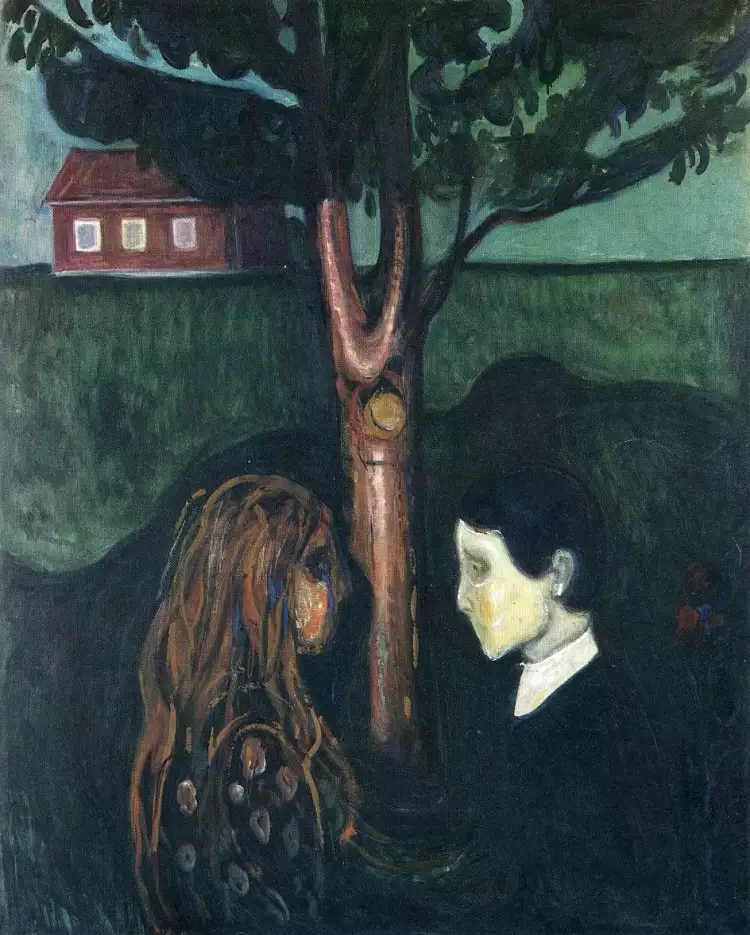 Edward Munch. Eye to eye, 1894
Edward Munch. Eye to eye, 1894
Edward Munch's Most Famous Paintings
Edward Munch's paintings are the object of desire for collectors and criminals alike. A large part of the expressionist artist's legacy is kept in the Munch Museum. The Steenersen Museum in Oslo also holds a significant collection, from which six of the genius's works were stolen in 2018. Among the most famous works of the artist are:
- "The Scream" (1893). A landmark painting by Munch, known in four variations. One of them is in private hands, and at the time of its sale in 2012, a record was set: it became the most expensive work in the history of open auctions. The collector acquired "The Scream" for $119.9 million.
- "The Dance of Life" (1899). An ambiguous piece where the melody of joie de vivre is tinged with notes of hidden threat and anxiety.
- "Madonna" (1894). A controversial work in which the painter humanized and desacralized the canonical image to the maximum extent.
- "Melancholy" (also known as "Jealousy" or "Evening") (1894). The painting depicts the author's friend, Jappe Nilssen, experiencing a love tragedy. It is considered one of the first works to embody the characteristic features of Munch's style.
- "Evening on Karl Johan gate" (1892). A philosophical piece where the artist goes against the crowd, against the flow. Themes of loneliness, non-conformism, and confrontation with a hostile world resonate in this painting.
- "The Sun" (1916). One of Munch's late works, embodying the radiance of life and humanity's aspiration towards light. However, this radiance is excessively bright, scorching, and blinding, so it appears "hellish" to many critics.
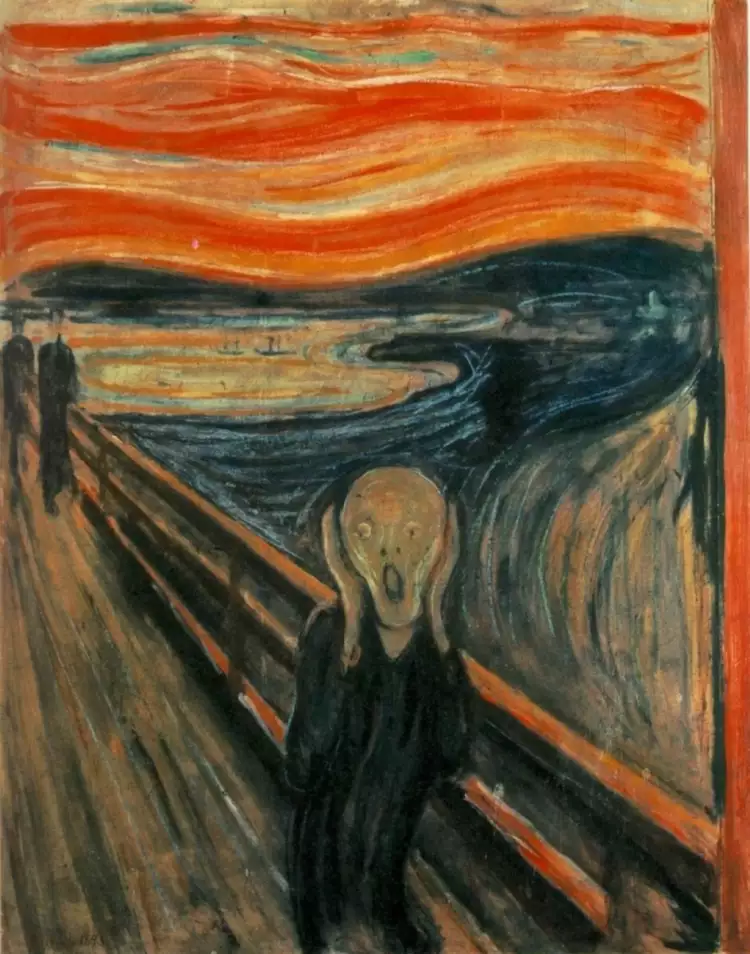 Edward Munch. The Scream, 1893
Edward Munch. The Scream, 1893
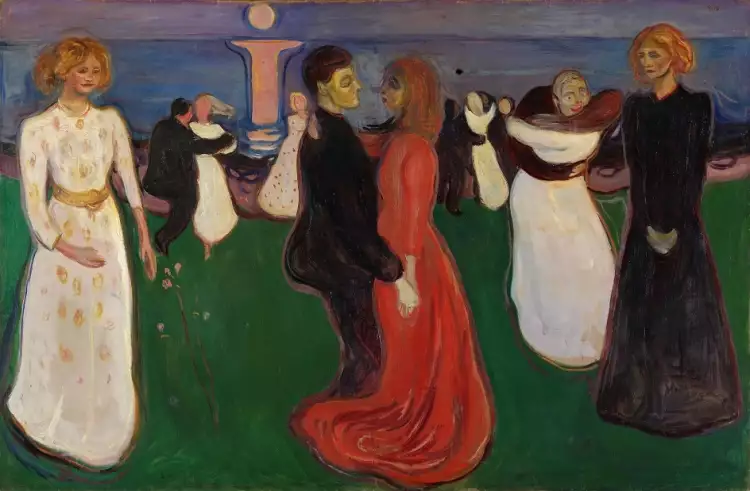 Edward Munch. The Dance of Life, 1899
Edward Munch. The Dance of Life, 1899
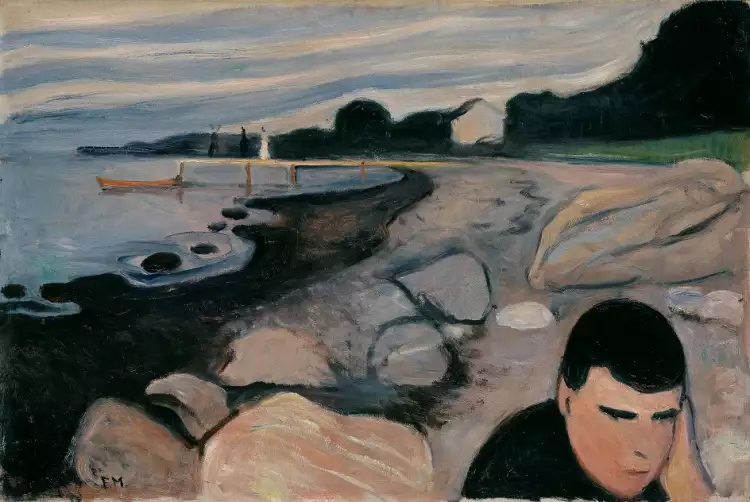 Edward Munch. Melancholy, 1894
Edward Munch. Melancholy, 1894
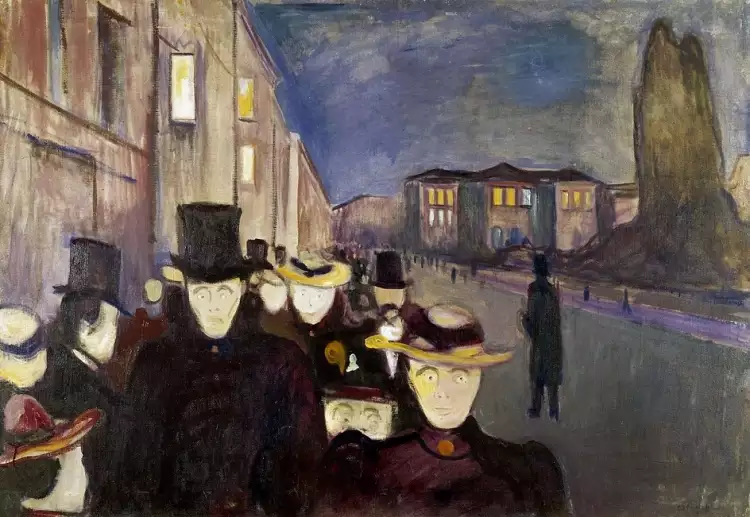 Edward Munch. An Evening on Karl Johans gate, 1892
Edward Munch. An Evening on Karl Johans gate, 1892
Edward Munch's oeuvre had a tremendous influence on the development of 20th-century art, and thanks to "The Scream," this influence extended beyond painting and spread to other cultural spheres, including literature and cinema. The ideas laid down by Munch are reflected in the works of contemporary artists.
On the VeryImportantLot website, one can always find modern paintings executed in an expressionist manner. This well-known internet platform operates in dozens of countries, hosting auctions of antiques and selling works by contemporary artists. It offers an excellent opportunity to inexpensively purchase a painting, drawing, graphic, icon, or sculpture by a promising author who may achieve the fame of Edward Munch in the future.
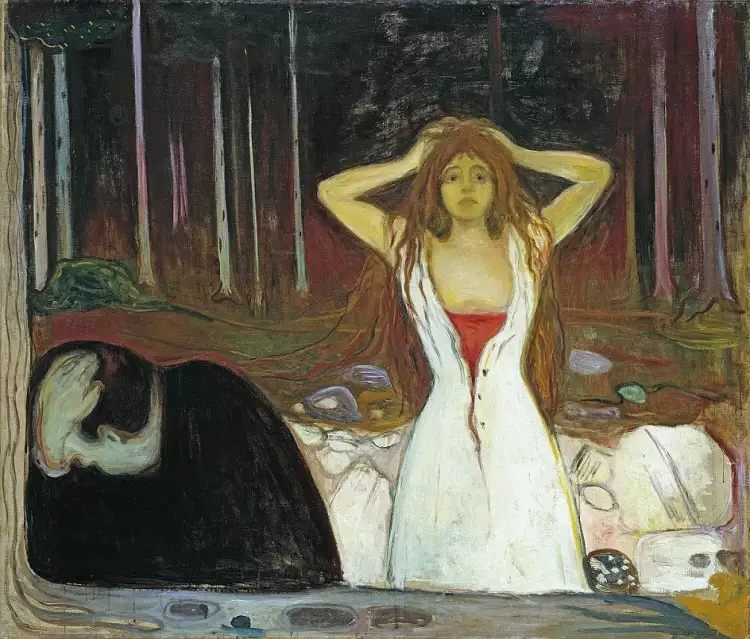
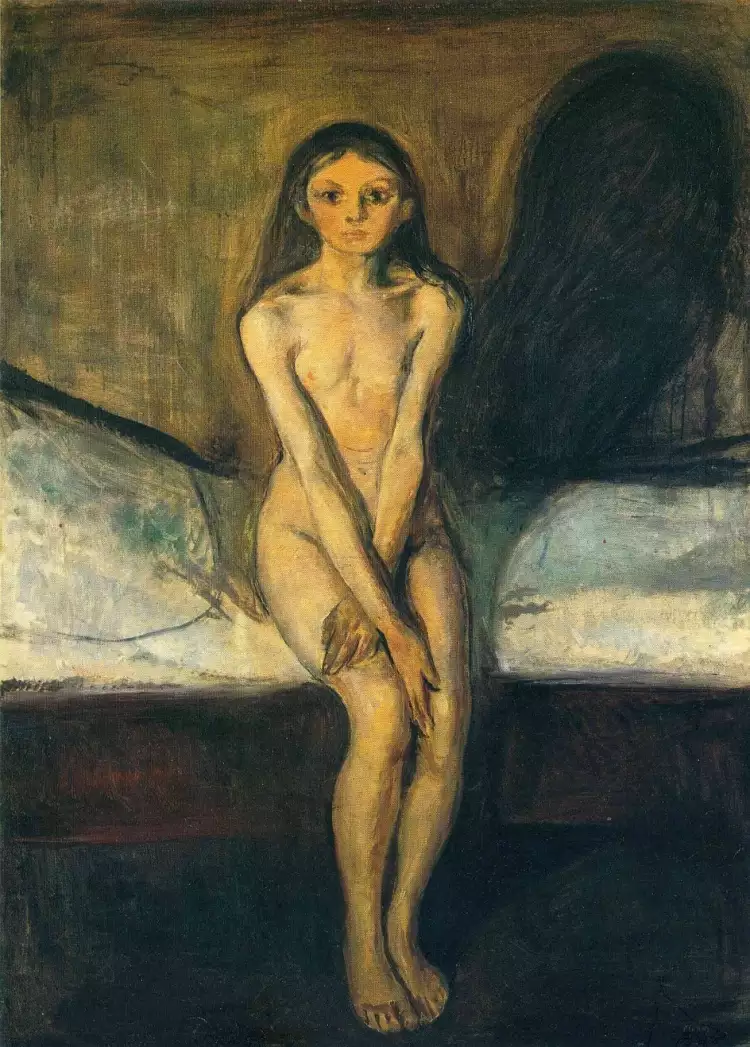
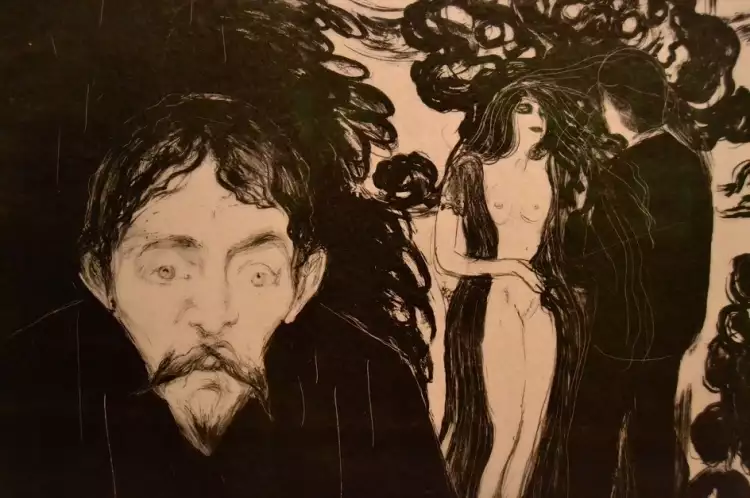
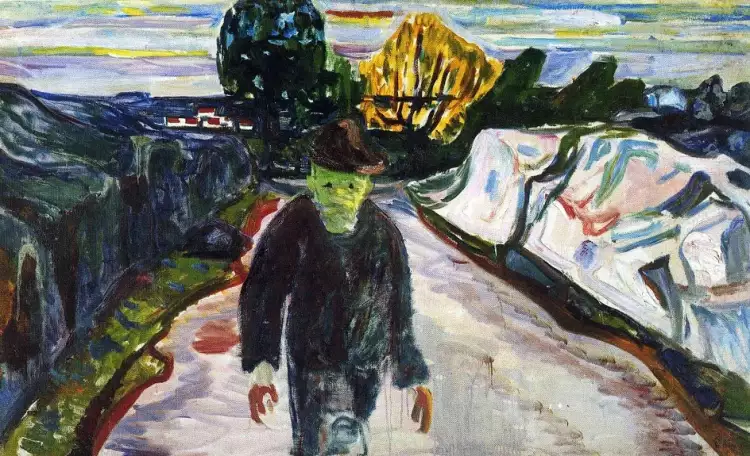
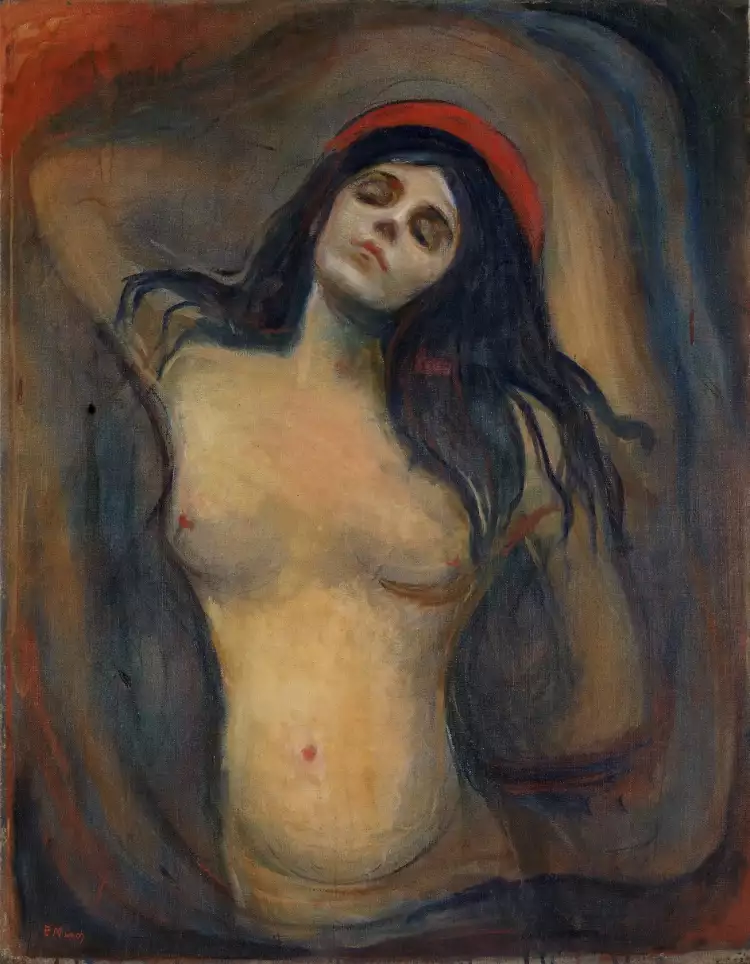
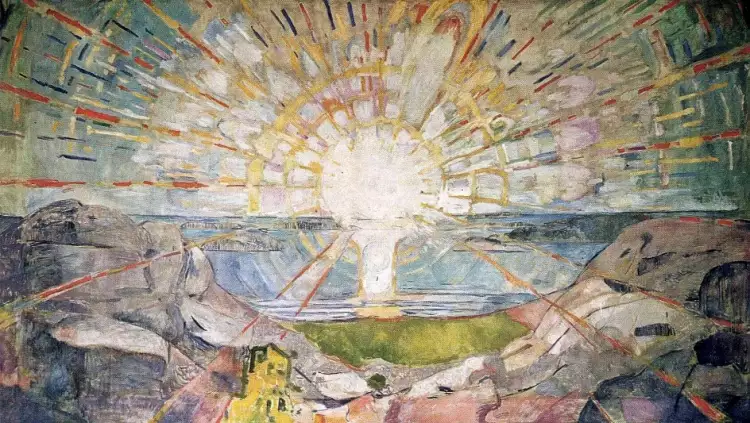
 Wettmann Onlineauctionen: A Portal to Rare Antiques and Luxurious Treasures
Wettmann Onlineauctionen: A Portal to Rare Antiques and Luxurious Treasures 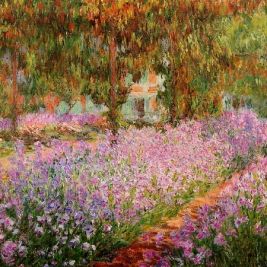 Impressionism in painting, or The Catchers of the Beautiful Moment
Impressionism in painting, or The Catchers of the Beautiful Moment 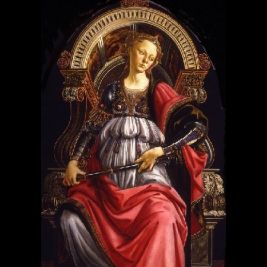 Allegory: Essence, Distinctive Features, History in Art
Allegory: Essence, Distinctive Features, History in Art 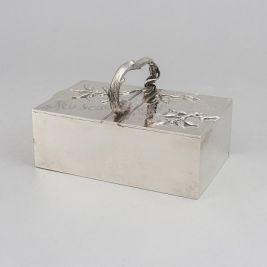 Lorie Company - silver in the Art Nouveau style
Lorie Company - silver in the Art Nouveau style  Emerging Color and Material Trends in Architecture for 2023
Emerging Color and Material Trends in Architecture for 2023 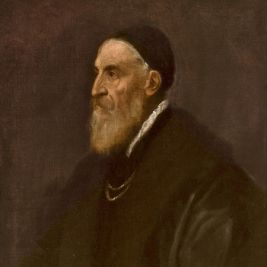 Titian Vecellio was the greatest Venetian genius of the Renaissance era
Titian Vecellio was the greatest Venetian genius of the Renaissance era 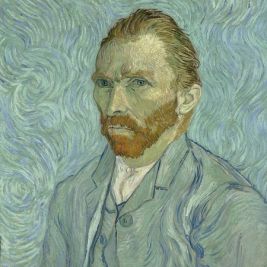 Vincent van Gogh is the most iconic artist of Post-Impressionism
Vincent van Gogh is the most iconic artist of Post-Impressionism 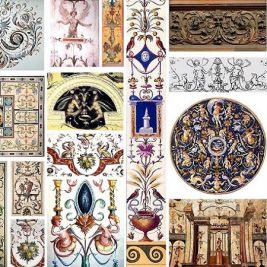 Grotesque is an eccentric art with harmless humor
Grotesque is an eccentric art with harmless humor 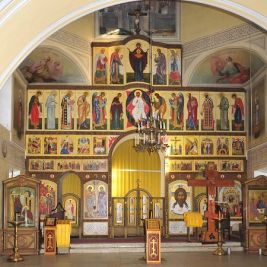 The most famous Orthodox icons
The most famous Orthodox icons  Silver of Great Britain - History, Styles, and Hallmarks
Silver of Great Britain - History, Styles, and Hallmarks